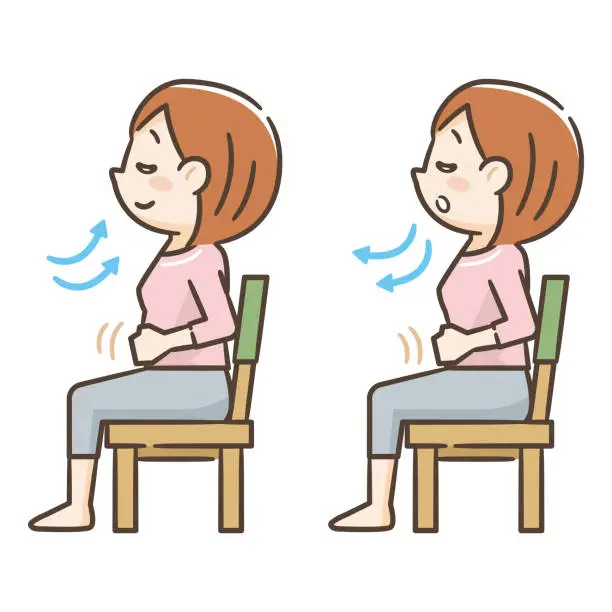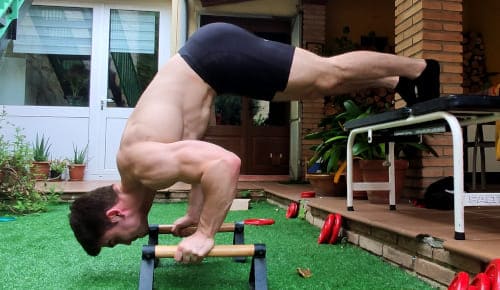Best Vocal Exercises for Singers, Actors, and Anyone Who Wants to Sound Their Best
Introduction
Voice exercise is any activity that is designed to improve the function and quality of the voice. It can be used to improve vocal range, projection, clarity, and resonance, and reduce hoarseness and breathiness. Voice exercise can also be used to improve articulation and pronunciation, as well as reduce the risk of developing vocal problems.
When making a presentation, one of your most effective tools is your speaking voice. It can help you convince your audience that you are credible, passionate, and surety. However, if your voice sounds weak, strained, or monotone, you run the risk of losing their interest. For this reason, it’s important to warm up your voice before speaking, just as you would your muscles before working out.
There are many different types of voice exercises, and the best exercises for you will depend on your individual needs and goals. Some common voice exercises include:
- Hums and lip trills: These exercises help to warm up the vocal cords and improve flexibility.
- Scales and arpeggios: These exercises help to expand vocal range and improve pitch control.
- Vowel and consonant drills: These exercises help to improve articulation and pronunciation.
- Breathing exercises: These exercises help to improve breath support and control, which can lead to improved vocal projection and reduced vocal fatigue.
Voice exercise can be done individually or with the help of a voice therapist or singing teacher. If you are new to voice exercise, it is important to start slowly and gradually increase the intensity and duration of your workouts. It is also important to warm up your voice before exercising and to cool down afterward.
Your voice could get quite weary very quickly if your line of work involves a lot of speaking or singing. You might be able to improve your singing or speaking voice by warming up vocally. Breathe deeply, move your tongue around, and simulate chewing to warm up your voice. Trill your lips and practice saying tongue twisters to improve your singing or speaking voice. You can exercise your voice by singing and by saying “Mm-mm” or “Ney ney ney.”
Here are some tips for getting started with voice exercise:
- Locate a peaceful area free from interruptions.
- Start by warming up your voice with gentle humming and lip trills.
- Improve the period and power of your exercises gradually.
- Focus on maintaining good posture and breath support throughout your exercises.
- The moment you experience any pain or discomfort, cease the workout.
- Be patient and consistent with your voice exercise routine. To see results, one must put in time and effort.
If you have any concerns about your voice, please see a doctor or speech-language pathologist for evaluation and treatment.
some of the most effective voice-warming exercises and improve your vocal quality.
Warming Up Your Muscles
The Importance of Vocal Warm Ups
Do you have a specific word or phrase that you like to say to prepare your voice for the day?
Any particular words that you can “articulate” that “resonate” with you? Excuse the pun. I’ve come across countless vocal warm-up exercises during my time as a voice major, and it’s always interesting (and entertaining) to add new ones to the repertoire.
Your ability to sing or voice act will become more versatile as your vocal folds get more toned. While doing this, your risk of damage is decreased by consistently performing a set of vocal warm-up exercises before you want to take part in a long-term vocal session.
Simply put, you will surely sound tense and anxious if you approach the microphone feeling pressured or tense. However, your vocal performances will also reflect your mental and physical state if you enter the studio feeling calm, limber, and physically prepared to take on that song or script read.
Tip: Your voice will become more flexible, agile, and at ease the sillier you sound and the better a vocal warm-up activity makes you feel. Do not be fearful. Fun with it.
Warm-Up Exercise / Vocal Exercises for Voice:
Vocal Warm-Up Exercise: Breathing Exercises

Following your body stretches, the following activity in your warm-up routine should contain some breathing techniques. Before a major recording, breathing exercises are a great technique for relaxing your vocal cords and definitely improve your voice range.
You would greatly benefit from incorporating the following excellent breathing exercises into your warm-up routine:
Exercises for airflow:

After stretching your face and body, concentrate on flowing air through your upper body. Deeply inhale through your nose while counting from one to eight. Hold your breath for an additional eight counts when you reach eight. Exhale for eight more breaths via your mouth, very slowly, with your lips slightly parted. Allow the air to exit for at least eight seconds while moving steadily yet slowly. As you force the air through your lips, it should naturally Whistle.
Voice rises and falls:

Now that you have practiced, it’s time to introduce some pitches. Speak or sing a word repeatedly, letting your voice gradually climb from a very low pitch to a very high pitch, as opposed to going up and down a conventional musical scale. Then let your high-pitched voice gradually descend to a low tone. Return to using your entire voice range.
Singing at various pitches:

If you have access to a piano or a guitar, play some major scales to guide you up and down your vocal range. When you reach the maximum range of your voice, stop modulating up in half-steps. Begin modulating downward in half-steps after that. You can sing privately if you don’t play an instrument or don’t have access to one.
Humming:

Begin with humming at a pitch that looks natural to your voice. Expand gradually to higher and lower frequencies after that. Your voice cords will be stimulated by this, helping you to perform more difficult warm-up exercises later.
The Straw Method.

Practice breathing in and out while holding a straw in your mouth, or simply humming. You will naturally concentrate only on your breathing while maintaining full concentration on your face and body while your lips are locked around a straw.
Lay on the Floor.
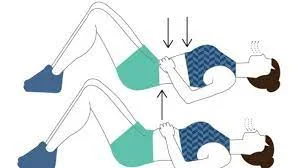
Have you ever tried singing with your back to the ground while lying on the ground? Your diaphragm will move if you concentrate and place your hands on your stomach, which may feel strange at first. This is a simple technique for focusing on your breathing.
The Hissing Exhale.

Try out the following breathing exercises as part of your vocal warm-up regimen. Start by taking a few comfortable deep breaths in, followed by a “sss” hissing sound as you exhale. Change the length of your inhalation and exhalation with each hiss, trying to go longer and longer until you feel yourself starting to run out of air.
Take a deep breath.
Straighten your back when you get up, and keep your shoulders back and at ease. Put your hands on your stomach with both of them. Enter your breath through your nose. As you inhale, let your ribs and abdomen expand. While counting to ten, hold your breath. Exhale gradually after that. Be sure to tighten your abdomen as you exhale, as if you were pushing the air out of it.
Your shoulders shouldn’t move up and down while you breathe throughout this breathing exercise; they should stay in position.
Two to three more times should be added to this workout.
Vocal Warm-Up Exercise: Tongue Twisters

Articulate, articulate, articulate. One of the most important components of your performance in the voice-over business is the capacity to pronounce words clearly.
Nobody will be able to understand a word you say if you cannot speak or pronounce yourself clearly.
Unique New York, unique New York, unique New York are the five traditional tongue twisters.
A large black insect is bit a large black bear.
She is by the beach selling seashells.
Peter Piper took something to eat from a pickled pepper.
If a woodchuck could chuck wood, what would be the maximum amount that it could chuck?
Prior to speaking in front of a group of people, you should get comfortable with pronouncing a few difficult consonants.
Move your tongue around.

Swish your tongue back and forth and around in your mouth while it’s slightly open. Take five to eight seconds to do this. Repeat two or three more times.
This practice will assist in relaxing and relaxing the back of your tongue muscles.
Massage your jaw and cheek muscles.

Place your hands on your cheeks and sides of your face. Rub your cheek and jaw muscles with your palms in slow, circular motions. While you massage, move your jaw up and down to help release the muscles in your jaw.
Do this three to five times for 20 to 30 seconds each.
Pretend to chew.

Act like you are chewing gum or eating something. Chew for five to eight seconds, slowly, using the muscles in your upper and lower jaws. Recount this procedure in two or three more terms.
Your jaw muscles will become more relaxed and loose with this workout.
Roll your neck and shoulders.
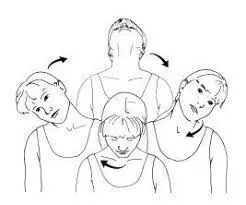
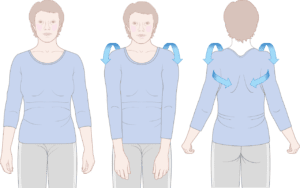
Rotate your head slowly anticlockwise and then clockwise while keeping your shoulders motionless. Repeat ten times. Rotate your shoulders ten times backward and ten times forward while maintaining a still neck.
When combined, these exercises will assist in releasing the tight muscles in your neck and throat.
Stretching Exercises for Voice
Try these exercises in order to improve your voice-acting capabilities
Vocal Warm-Up Exercise: Full-body stretching

Your abdomen and diaphragm must be powerful in order to force air through your voice box; your lips and larynx alone cannot produce your voice. Stretch your entire body before beginning your voice warm-ups. Try side stretches where you stand with your feet shoulder-width apart and lean to each side, pulling yourself further in each direction with your opposing arm. As you stretch, move freely and softly while taking deep breaths to widen your ribcage.
According to voice actor and coach Heather, side stretches are excellent for enlarging your rib cage and giving you the impression that your lungs are full of air.
Simply inhale deeply and extend your arms upward. After exhaling, tilt slightly to the left while stretching your side body. Simply hold it there for a few seconds before inhaling to the center and exhaling to the right.
“Next, take a hip-width position while standing. Take a deep breath and extend your arms upward. As you exhale, slowly droop at the waist and lower your hands toward the floor. No matter how far you can extend, just bending over will give you a pleasant, warm stretch. After a few breaths there, carefully raise yourself back to a standing posture on the inhale.
Exercises to Stretch Your Mouth, Tongue, and Lips
For about 1 minute:
For a few seconds, grin with as much width as you can, then swiftly purse your lips and hold. Repeat this a few times back and forth before immediately sticking your tongue out. Do your best to extend it. Then use the tip of your tongue to contact the backs of your upper teeth. Take a 5-second hold.
Declare “Wow.” When you speak the word, pay attention to where your mouth is located. Your mouth is open at the end of the word as your lips begin to pursle. Exaggerate the positions and keep saying it repeatedly as if to express the word “wow.” You should now be able to feel the muscles around your lips and throughout your face.
Face stretches:

Voice actors use expressive facial muscles while they perform,; stretch your facial muscles in addition to your other body parts. To widen your mouth’s roof, scrunch up your mouth, blink quickly, and yawn loudly. You may develop characters by using your strong facial muscles.
Strengthening Your Speaking Voice
Say “Mm-mmm.”
Continue doing this until your face begins to vibrate or buzz. The vibration may give a slight tickling sensation on your face, but this is a sign that you are performing the exercise properly.
Five times through this exercise.
Alternate between “Mm-mm” and “Mm-hmm.”
Say “Mm-mm” for stomach and “Mm-hmm” for “yes.” In between the two mms, switch. Then do it five more times. Then, change the pitch of your voice from low to middle to high and back again, alternating between the two mms. Ten times, do this.
Mask resonance is developed by this exercise.
say “ney”:
Say it again: “Ney ney ney.” Say “Ney ney ney ney” while moving your voice from low to midrange to high and back again. Say it clearly yet without shouting.
Ten times should be repeated.
Practice saying tongue twisters.
Say a tongue twister as quickly as you can while maintaining proper pronunciation. begin slowly and then quicken your speed. Your throat muscles are isolated throughout this workout, which aids in clearer speech. Practice your tongue twisters with phrases like “Three free throws.”
By the shore, she is selling seashells.
It says, “The blue bluebird blinks.”
“Freshly fried flying fish, fresh fried flesh.”
Peter Piper was the one who selected some marinated peppers from a bunch.”
Regularly perform these workouts. Three to five times per week, perform these workouts. Additionally, practice these exercises for 30 minutes before public speaking or for extended periods of time.
Strengthening Your Singing Voice
Exercise for vocal warming up Descending on Nasal Consonants.

The ability to open up passages to descend on a nasal consonant sound is another helpful trick that any singer or voice actor should have in their repertoire. There are several techniques you can employ to warm up your sinuses and nasal passages, as long as you’re a fan or student of IPA (the International Phonetic Alphabet).
Consider the English word “onion,” for instance. Particularly its second syllable, which makes the ‘gn’ sound, it has a nasal quality. Stretch, slide, and descend glissando-style that ‘gn’ sound with care.
On that, move from the fifth down to the root while making the sound “ah.”
Reciting any word that ends in a Z, such as “buzz” or “fuzz,” is another popular vocal warm-up for many voice performers. To become resonant, stay on the Z.
“My favorite warm-up is to work on singing the chromatic scale very, very gently,” the woman said. Whatever octave you feel most at ease with. Just sing till the task is finished and heated, going from lowest to highest and back.
Exercise for Warming Up the Voice: Humming and Lip Trills

It feels good to relax your facial muscles and make room for resonant sounds by humming in a loose, soft manner. Your resonators begin to function when you hum or do lip trills, which helps your voice recover its quality after a long period of rest. These are the best to do first thing in the morning.
You can warm up your vocal folds and relax your facial muscles by performing lip trills and flutters. If you use them in the shower, they’re much more powerful!
some wonderful step-by-step methods for controlling your breathing if you need some help with lip trills:
Vocal Warm-Up Exercise: Fricatives
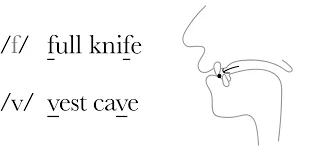
Fricatives are consonants that are created by restricting airflow and creating a friction sound. The most prevalent consonants are Fs, Ths, and Vs. Vocal instructors can teach you more about creating fricatives.
This Glossika animated film demonstrates how fricatives are made.
Trill your lips.
Blow air through your lips gently while keeping them closed and relaxed. Continue doing this until your lips start to trill. Spend ten seconds working on this. Two to three more times should be done the workout. Add a pitch to the exercise by making a “uh” sound with your lips while you trill. Spend five seconds doing this. Your nose, mouth, cheeks, and forehead should begin to tingle after the pitch is added.
The Do-Re-Me fa so ti do said.
Solfège is another name for this. Sing “Do Re Mi Fa So La Ti Do” up and down the scale starting on the middle C. Pay close attention to each pitch as you solfège.
Five times through this drill.
Sound the siren.
Think about the noise a fire engine would make as it passes. Ooooo and “Eeeee” should be used to make the sound, starting at low range. Go up and down in your vocal range for five to eight seconds as you make the siren sound. Two to three more times, starting higher each time, repeat this exercise.
Your voice is worn out if you can’t sing the high and low notes. After five minutes of voice rest, stop the activity.
Learn how to say “Mah-May-Me-Moe-Moo.”
Sing this slowly and repeatedly, starting low. Five times through this workout, start higher each time.
Try to sing them all in a single breath to make this workout more challenging.
Don’t raise your voice excessively. As you perform this exercise, your voice should be at ease.
Say “Ng.”

Using the lung-like “Ng” sound, say the word. The soft palate at the top of your mouth and the back of your tongue should feel like they are coming together. Ten seconds are needed to hold this sound.
two to three more times, repeat this practice.
Sing a tune.

Choose a song that you enjoy or something straightforward like “Twinkle Twinkle Little Star.” Hum the music to yourself two or three times, depending on how long it is.
Your vocal muscles will become more relaxed and loose after this exercise.
Perform this exercise daily

Do these exercises every day. If not every day, then at least five times every week. Additionally, schedule these workouts for 30 to 45 minutes prior to a performance.
Vocal Warm-Up Exercise: Yawn

Let’s talk about range now that your articulators and resonators have warmed up.
Your jaw naturally descends when you yawn, which controls your oxygen levels and extends your soft palate.
Yawn a lot, advises if you want to make your voice sound better. “It eases the muscles in your throat. It eases voice cord tension. And the tone softens as soon as they relax. Your voice will sound better the lower it is.
Bonus point: You’ll notice that you are more alert as your brain receives more oxygen.
How to Yawn and Sigh
Adding a correct yawn-sigh to your repertoire of vocal warm-up techniques can be a great trick.
First, yawn-like open your mouth.
Step 2: Lower your voice all the way from its highest point to the lowest grumbling you can produce.
Step 3: You’ll be aware of your dropping out.
The number of times you perform this exercise as part of your vocal warm-up program should be limited. Never start with this one; in most cases, wait until the very end after you’ve already used your voice.
This singer provides some excellent advice and background details on the significance of including yawning in your vocal warm-up routine:
Bonus Vocal Warm-Up Tips
Even though you need voice warm-ups for speaking, there are some additional suggestions to keep in mind to get the most of your vocal warm-ups or vocal exercises. These vocal warm-ups for everyday speaking include the following:
Have a restful night’s sleep
Even though it may seem obvious, obtaining a good night’s sleep the night before a recording is really important. If possible, aim for eight hours.
A well-conditioned, lubricated voice is the ideal preparation for warming up at the crack of morning, along with being well-rested. This entails remaining properly hydrated, even before you are required to perform. A voice actor’s best friend is water that is at room temperature! Alcohol and caffeine, on the other hand, will reduce your level of hydration and affect your vocal performance, so avoid ingesting liquids containing either of these before a recording.
Warm up your voice in the shower.
You can definitely squeeze your warm-ups into your morning shower routine if you can multitask. The warm water is a bonus, and the acoustics will be excellent. The humidity will also be beneficial because it will coat and safeguard your throat, vocal cords, and other body parts.
You can learn even more advice on vocal warm-ups that will help you get ready for your next performance and make your next recording session as successful as possible.
Using the Obstruction Drill to Improve Articulation For approximately two minutes:
Find a piece of copy and something to block your mouth first. The ideal size would be comparable to a wine cork. Both sit up straight or stand with your feet shoulder-width apart.
Put the obstruction in front of your teeth and read the copy as clearly as you can. Your muscles will have to work extra hard to compensate for the obstruction, which will make speaking difficult. Read on for another two minutes or so.
Then remove the blockage from your mouth and read the same passage of text. You’ll find that you can pronounce the words easily now.
Developing Your Plosives For approximately two minutes:
About where your microphone would normally be placed, hold your hand palm a few inches from your mouth. Afterward, remark “Pam’s preppy friend Peter.” With the P’s, you’ll probably experience an increase of air. The popping sound coming through your microphone is caused by that burst of air.
Pam’s preppy pal Peter with full vocalization till the surge of air disappears. It will become second nature for you to talk without plosives, even in everyday discussions, if you practice this every day for about two minutes.
The “Mum” Exercise will help you relax your voice.
- Say “Mum” (like in “Mummy”) aloud at a loudness that feels natural.
- Next, choose a note that feels natural at the bottom of your voice (for men, try C3, and for women, G3) and speak-sing the words “one” on that note.
- To finish, sing an octave-and-a-half scale, replacing the “Mum” sound for each note.
Food to Eat
- Honey (mixed with lemon and warm water)
- chicken
- fish
- apples
- watermelon
- bok choy
- eggs
- yellow peppers
- squash
- clear broth soups
Food to Avoid
- Hot sauce / spicy foods
- Greasy snack foods
- oily foods
- Chocolate
- Cheese
- Milk
- Yogurt
- Ice cream
- Nuts
- Caffeine
- Alcohol
contraindication
Contraindications of exercise of voice are conditions in which vocal strain should be avoided to prevent further damage. This can include:
- Acute laryngitis: Inflammation of the larynx (voice box) due to infection, overuse, or irritation.
- Vocal cord nodules or polyps: Growths on the vocal cords that can cause hoarseness and breathiness.
- Vocal cord paralysis: Loss of movement of one or both vocal cords due to nerve damage.
- Reflux laryngitis: Laryngitis is caused by stomach acid backing up into the throat.
- Cancer of the larynx: Malignant tumor that develops in the larynx.
Other conditions that may require voice rest include:
- Recent surgery on the head or neck
- Tracheostomy: Surgical opening in the neck to create a new airway
- Laryngectomy: Removal of the larynx
- Respiratory infections: Such as bronchitis or pneumonia
- Allergies
- Severe dehydration
If you have any of these conditions, it is important to see a doctor or speech-language pathologist to get specific recommendations about voice rest and exercise.
In addition to the above conditions, there are some other situations in which it is important to avoid vocal strain, such as when you have a cold or the flu, or when you are very tired.
If you are unsure whether or not it is safe to exercise your voice, it is always best to err on the side of caution and rest your voice.
Here are some tips for resting your voice:
- Avoid talking loudly or for long periods of time.
- Whisper only if necessary.
- Drink plenty of fluids to stay hydrated.
- Alcohol and caffeine can dry out your throat, so stay away from them.
- Get enough sleep.
- Avoid smoking and secondhand smoke.
- If you have a sore throat, try sucking on lozenges or gargling with warm salt water.
If you have any concerns about your voice, please see a doctor or speech-language pathologist for evaluation and treatment.
Conclusion
The conclusion of exercise of voice is to improve the overall function and quality of the voice. This can include:
- Increased vocal range
- Improved vocal projection
- Reduced vocal fatigue
- Improved vocal clarity and resonance
- Reduced hoarseness and breathiness
Voice exercise can also help to improve articulation and pronunciation, as well as reduce the risk of developing vocal problems.
The specific benefits of voice exercise will vary depending on the individual’s needs and goals. However, most people will experience some improvement in their vocal function after regular exercise.
If you are new to voice exercise, it is important to start slowly and gradually increase the intensity and duration of your workouts. It is also important to warm up your voice before exercising and to cool down afterward.
If you are unsure about how to exercise your voice safely and effectively, it is a good idea to consult with a voice therapist or singing teacher
FAQs
What advantages come from having a loud voice?
You may stand out, demand attention, speak more effectively, gain confidence, and even enhance your health with its assistance. Whether you want to be a better public speaker, a corporate leader, or just stand out in regular discussions, finding your powerful voice will help you go where you want to go.
Why does my voice go weak?
Inflammation: Laryngitis: Vocal cord swelling caused by an infection or overuse of the voice. Allergy: Post-nasal drip, sneezing, and coughing cause swelling of the vocal cords. Laryngopharyngeal reflux: Stomach reflux that irritates and inflames the throat’s and voice cords’ sensitive tissues.
What advantages does voice have?
10 Health Benefits of Singing
It improves your mood to sing.
Enhancing lung function through singing.
You can reduce stress and relax by singing.
Singing can help with memory improvement.
The act of singing fosters a sense of community.
You can express yourself through singing.
Pain can be reduced by singing.
Gaining confidence via singing
How does voice affect verbal exchange?
Your voice tone matters while communicating since it can alter the meaning of what you say. There is many potential for misunderstanding with colleagues and clients if we are ignorant of the tone we are adopting. When our words and tone don’t match, it can lead to misunderstanding and confusion.
How do I regulate the tone of my voice?
To elevate your voice tone, put these 10 communication techniques into practice:
Learn to speak at a slow pace. Speaking too rapidly or slowly can result in monotone or robotic-sounding speech.
Change the volume.
Make use of inflection.
To emphasize, pause.
Make use of facial expressions.
Prepare your voice.
Consume water.
Take pauses.
How do voices affect the growth of the brain?
The auditory regions of the brain, like the primary auditory cortex, the emotional processing areas of the brain, like the amygdala, and the areas of the brain that recognize and value rewarding stimuli, like the area known as the hippocampus, were all more activated by the voices of the children’s own mothers than by the control voices.
Reference
- Muñoz, P. (2023, August 10). 4 Ways to Exercise Your Voice – wikiHow. wikiHow. https://www.wikihow.com/Exercise-Your-Voice
- TakeLessons Live. (n.d.). TakeLessons. https://takelessons.com/live/singing/daily-vocal-exercises
- Vocal Exercise Guide: 8 Vocal Exercises for Voice Actors – 2023 – MasterClass. (2021, May 19). MasterClass. https://www.masterclass.com/articles/vocal-exercise-guide
- Vendera, J. (2022, October 7). 10 Best Vocal Exercises for Singers – inSync. inSync. https://www.sweetwater.com/insync/best-vocal-exercises-for-singers/
- Ciccarelli, S., & Parachuk, T. (2023, August 10). What Are The Best Vocal Warm Ups for Voice Actors? Voices. https://www.voices.com/blog/vocal-warm-ups/


